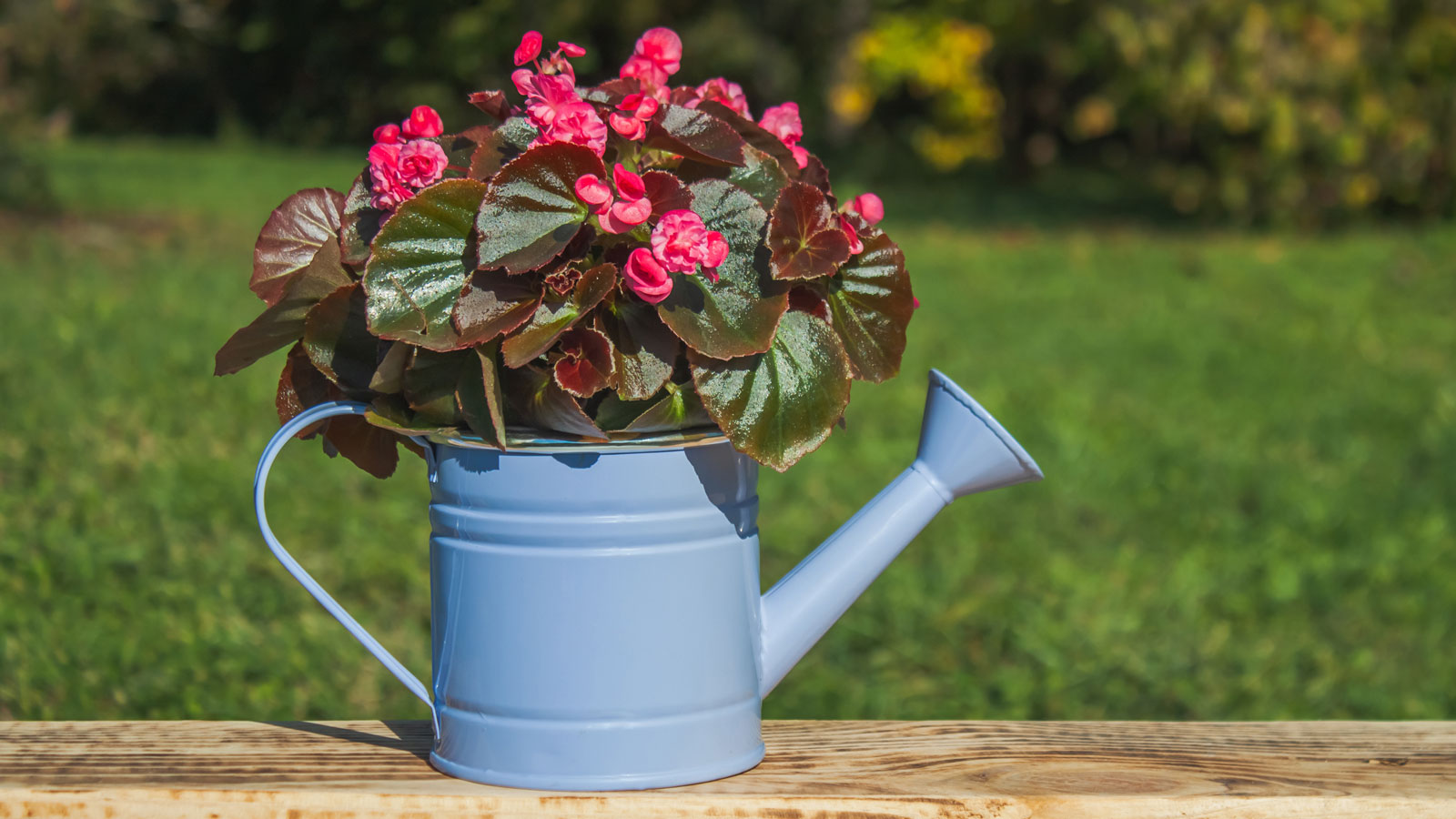Begonia Watering: How To Water Begonias (And When To Leave Them Alone!)
Improving the way you hydrate your begonias can have a major impact on their life expectancy and flowering quality. We explain how to get better at begonia watering


Getting to grips with begonia watering is a vital aspect of plant health. This is just as true whether you are growing begonias as houseplants or as an ornamental in beds and borders. However, correct hydration includes gaining a better understanding of how much water each plant will need per week in your own specific growing zone.
Learning to properly water a begonia from below is essential in preventing disease and supporting function. Using drip irrigation lines or soaker hoses are amongst the best options for watering begonias, as well as submerging the pots or hand-watering. This article will delve further into the most common questions about how often to water begonias and the best methods of watering them.
Watering Begonias in Open Ground
Begonias grow best in garden beds that have exceptional drainage; oversaturation or prolonged standing water can lead to the development of begonia plant diseases such as leaf spot or other fungal infections. Your plant’s need for water will vary depending on the region and climate.
While begonias grown in areas with ample rainfall only seldom require supplemental irrigation, those in drier climates may benefit from weekly watering. As a rule of thumb, water your begonias when the soil’s surface has dried to the touch, or once every four days.
Watering Begonias in Containers
Begonias grown in containers require water with much greater frequency. Weekly irrigation is likely to be needed throughout the plant’s period of active growth in spring and summer. Generally, the rate of watering should increase as temperatures rise throughout the season. The need for water also varies depending on humidity and the containers you’ve selected.
Begonia watering for pot-based plants relies on a degree of daily inspection. Gardeners should carefully monitor potted begonia plants for signs of stress or other indicators that water is needed, making certain to meet their needs before plants begin to droop or wilt.
Watering Begonias in Winter
When it comes to overwintering begonias, a plant’s need for water is reduced greatly. During the colder months, there is far less risk of an underwatered begonia falling foul of neglect. Hardy types grown in garden beds are unlikely to require supplemental water. However, irrigation may be necessary if conditions are especially warm or dry.
Sign up for the Gardening Know How newsletter today and receive a free copy of our e-book "How to Grow Delicious Tomatoes".
It’s essential to avoid overwatering during periods of cold, however, when conditions are most suited to rot. Potted begonia plants that have been moved indoors benefit from routine weekly watering. Pay special attention to humidity levels throughout winter. Help your plants with frequent misting or by placing containers atop a shallow bed of gravel filled with water.
Liquid Fertilizers for Begonias
Alongside knowing how to water begonias, it’s also important to apply liquid feeds at the correct time, and in the best way. Using liquid fertilizer is a quick and easy way to feed begonia plants in a controlled way. Balanced feeds, specifically formulated for use with ornamentals, should first be applied in early spring.
Continue to fertilize the plants throughout the season, as needed, working in tandem with your begonia watering schedule. Decrease feeding your begonia when the plant stops blooming, allowing the plant ample time for preparation for winter.
Frequently Asked Questions
Do Begonias Need a Lot of Water?
Begonia plants grow best in soils that remain consistently moist. For those grown in containers, or in regions prone to drought, supplemental irrigation may be needed to help maintain adequate levels of soil moisture. Still, gardeners should make certain to avoid oversaturation when watering begonia plants. Water only when the soil surface has dried.
What Are The Signs Of Watering Incorrectly?
Plants that have been watered improperly are much more prone to disease. Though overwatering is a major issue, underwatered begonia plants are also sure to show signs of stress and an overall decline in health. Common symptoms include drooping or wilting leaves, or in more severe instances, full collapse of the plant.

Tonya Barnett has been gardening for 13 years. Flowers are her passion. She has transformed her backyard into a cut flower garden, which she regularly chronicles on her YouTube channel http://www.youtube.com/@tonyawiththeflowers.